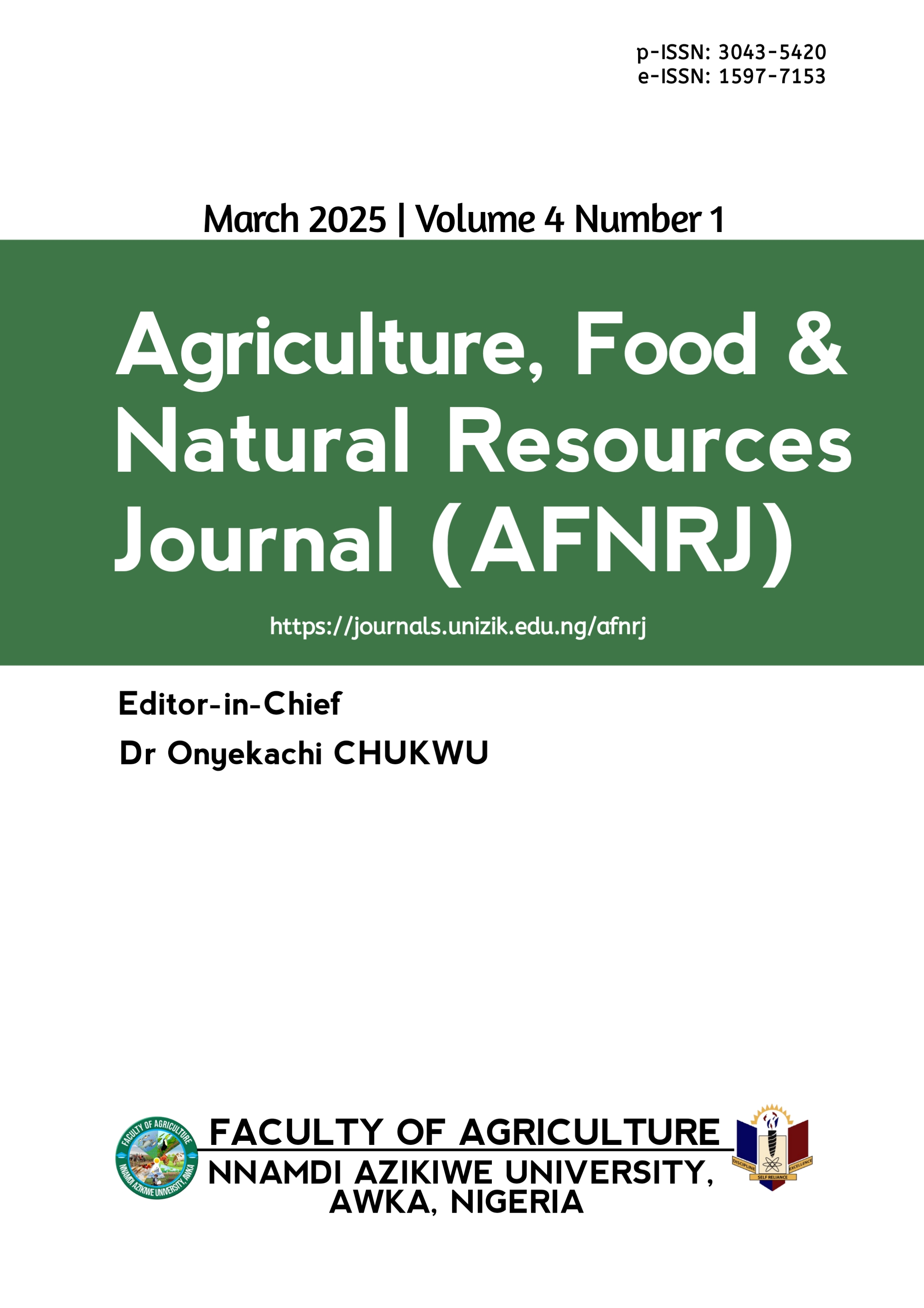Deep frying impact on the polycyclic aromatic hydrocarbon, textural, thermal and nutritional properties of African Snail
DOI:
https://doi.org/10.5281/zenodo.15106755Keywords:
Aromatic hydrocarbons, Deep frying, Polycyclic, Snail meat, Textural properties, ThermalAbstract
Processing conditions are important in the quality and preservation of meat of various kinds and sources. Frying is one of the processing techniques often employed in meat products, snail meat inclusive. This study evaluated the effect of deep frying on the polycyclic aromatic hydrocarbon, textural, thermal, and nutritional properties of African snail meat. Fasted snails were processed and deep-fried at varying time intervals (0, 4, 8, 12, and 16 minutes) before retrieval for analysis. The polycyclic Aromatic Hydrocarbons (PAHs) of deep fried African snails at varying times revealed that Naphthalene, Acenaphthylene, Acenaphthene, Fluorene, Phenanthrene, Anthracene, Fluoranthene, Pyrene, Benzo(a)anthracene, Chrysene, Benzo(b)fluoranthene, Benzo(k)fluoranthene, Benzo(a)pyrene, Indeno(1,2,3–cd}, phyrene, Dibenzo(a,h), Anthracene, Benzo(g,h,i), perylene were detected in all the snails irrespective of the frying time. The thermal properties of the fried snail samples for different time intervals revealed that thermal conductivity, specific heat capacity and thermal diffusivity ranged from 901.62 - 4,849.13 w/m2k, 485.68 - 2169.19 Jkg-1oC-1 and 0.1932 – 0.2375 m2/s, respectively. The proximate composition showed the impact of frying condition. The mineral composition showed that the calcium, iron, potassium, sodium, zinc, and magnesium elemental content of the fried snail meat ranged from 195.50 - 277.50 mg/100g, 8.10 - 9.85 mg/100g, 22.50 - 37.50 mg/100g, 212.50 - 297.50 mg/100g, 0.18 - 0.35 mg/100g, and 67.50 - 92.50 mg/100g, respectively. The deep frying caused a significant reduction in the moisture content of the snail meat and influenced the textural properties of the snails significantly. The values obtained for Polycyclic aromatic hydrocarbons compared with the recommended limit determined do not pose any danger to consumers.
Downloads
Published
Issue
Section
License

This work is licensed under a Creative Commons Attribution 4.0 International License.
which permits unrestricted use, distribution, and reproduction in any medium, provided the original author and source are credited.
Authors retain the copyright of their published work in the AFNRJ.





